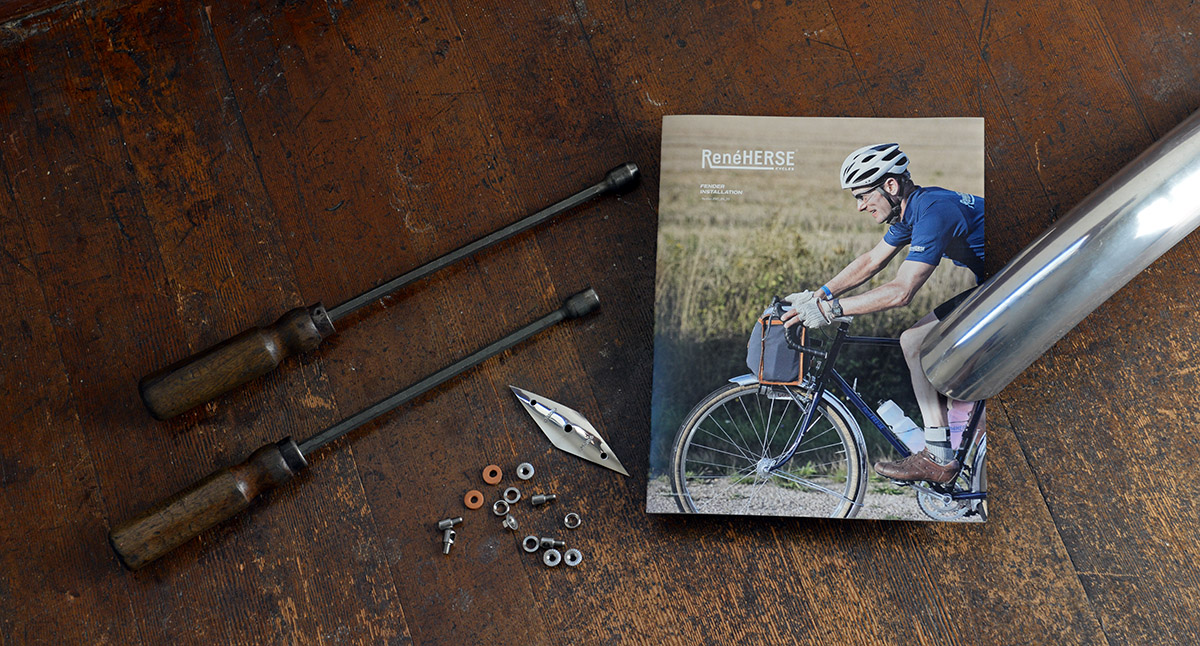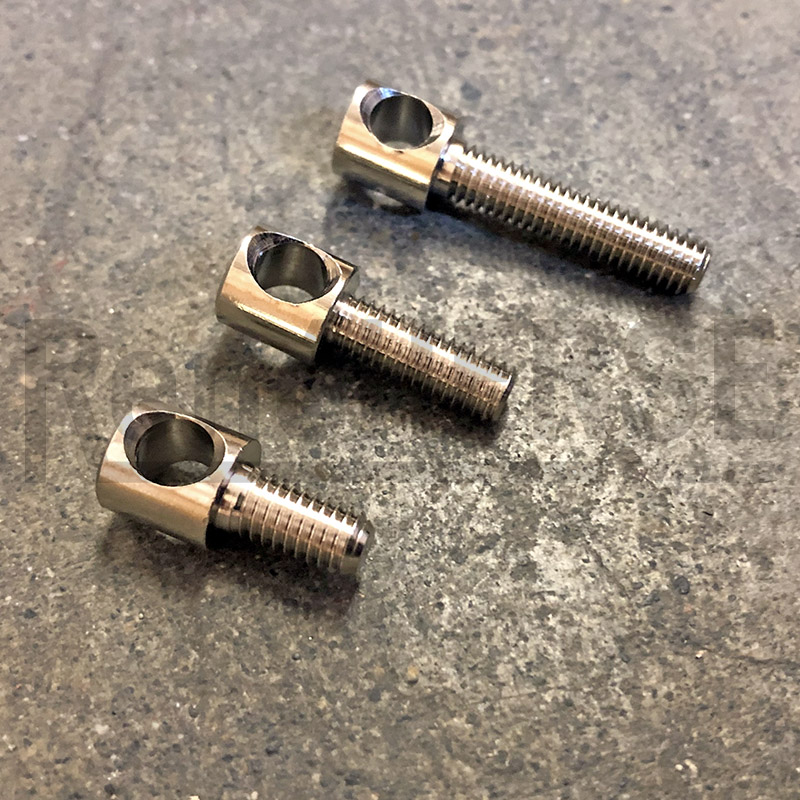We Love Fenders!
Many years ago, the biggest American bike magazine published a short note about aluminum fenders with the comment: “We are charmed by the idea that there actually are fender snobs!” I had to smile, because the reason we care so much about fenders is simple: We like to ride in all weather. And when it rains – or when the roads remain wet even after the sun is out again – the difference between excellent and mediocre fenders is actually greater than the difference between mediocre fenders and none at all. Here’s why we at Rene Herse Cycles are proud to be ‘fender snobs.’
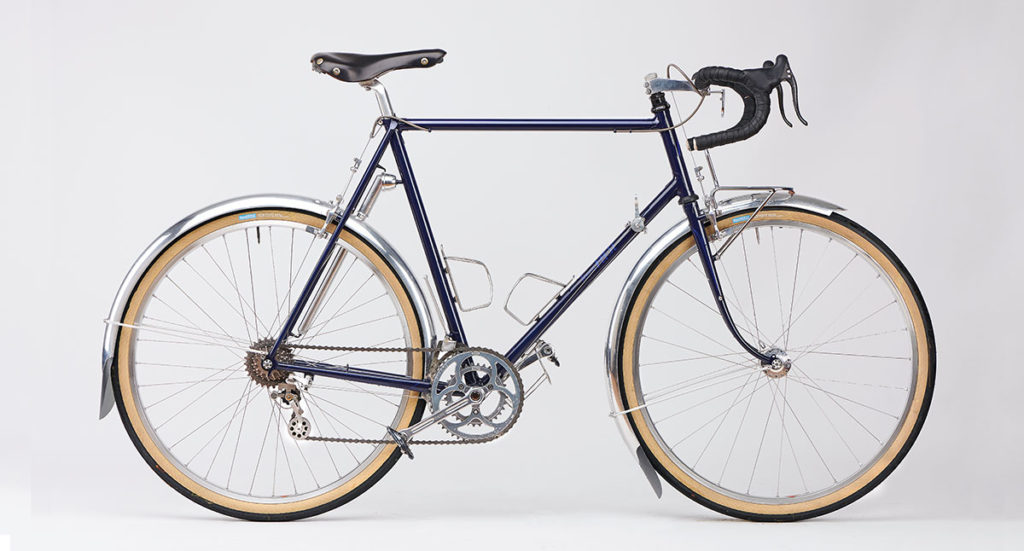
The most important feature of a set of fenders is the coverage they provide. Most front fenders are too short, and the spray from the front wheel hits the rider’s feet and the bike’s drivetrain. Worse, the water that runs down inside the fender gets incorporated into the spray, so that a too-short front fender gets your feet wetter than no fender at all!
Our Rene Herse fender blades are made by Honjo in Japan, with extra coverage both front (140°) and rear (195°). That way, the front fender reaches down far enough to catch most of the spray from the front wheel. A mudflap (available separately) catches the rest, so you feet don’t get any spray at all. The rear fender can extend beyond the bottom bracket, so that water doesn’t get blown onto your chain, even when you’re riding in a crosswind.
Almost as important is how the fender looks like inside. Rene Herse fenders have a rolled edge, which keeps the water inside the fender. Plastic fenders have just a flat edge. It may be just one drop per second that drips onto your feet, but over a long ride, your shoes and socks will be soaked. Why put up with that if you don’t have to?
With great fenders, you realize that there actually isn’t that much water falling from the sky, but most of the misery is caused by road spray… In the little video clip above, I’m riding through a typhoon in Japan. I’m not wearing booties, but my feet didn’t get wet during a two-hour ride in pouring rain.
And since your drivetrain doesn’t get hosed down with water from the road surface, it remains clean, and you rarely have to lube your chain. Really!
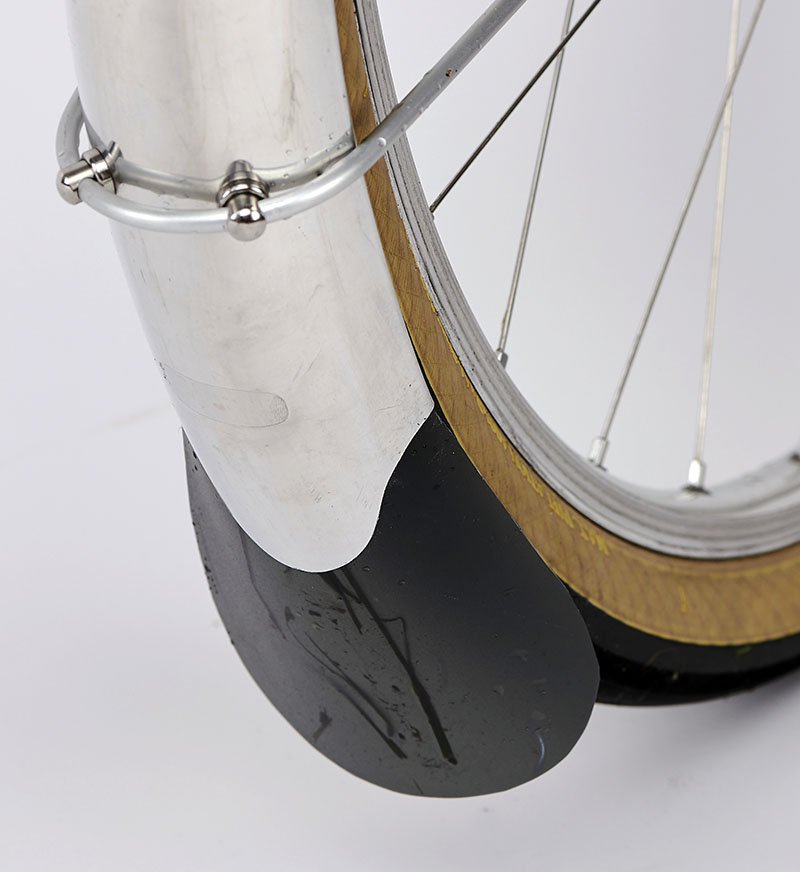
Rene Herse fenders come with our own fender eyebolts. They aren’t just nicer, but they are also just the right length – 7 mm – so they don’t protrude into the fenders more than necessary. (Most aluminum fenders come with 12 mm bolts that stick an extra 5 mm into the fender. Mud, small stones and sticks can get caught on them…)
What you don’t see in the photo are the special Tensiloc nuts on the inside. The bolts that hold the fender stays vibrate a lot, but the built-in washer and the locking grooves prevent the nuts from loosening. These nuts cost more than 10x as much as standard nuts. To us, the extra cost is worth the peace of mind when we’re on a long ride.
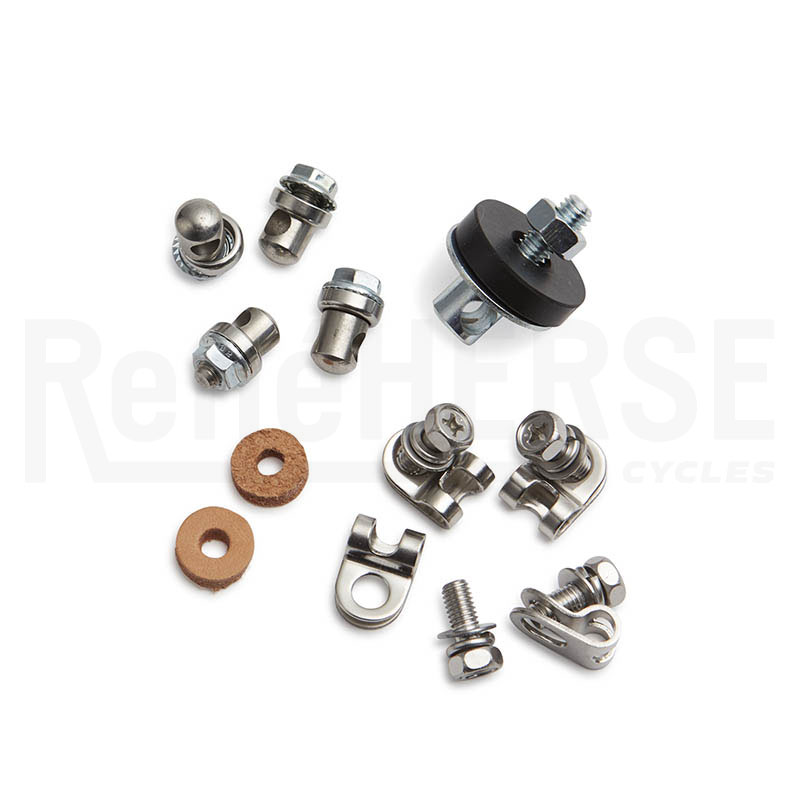
The hardware that we supply with our fenders comes from four different sources, including our own custom parts – because small details can make a big difference in how well your fenders perform.
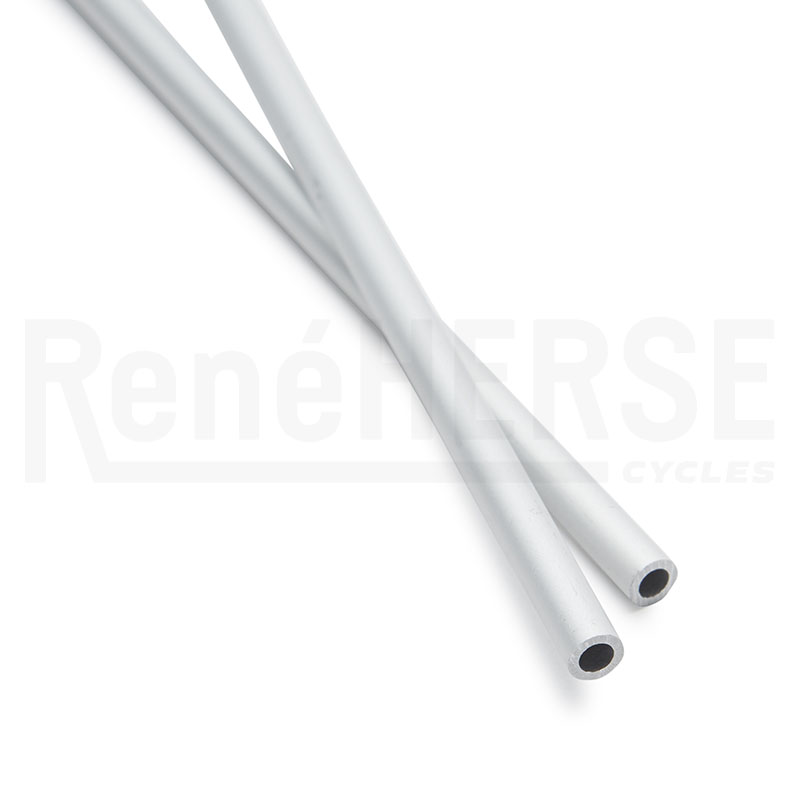
Rene Herse pioneered tubular fender stays for the 1940s Concours de Machines competitions for the best (and lightest) all-road bike. Back then, they were special parts used only for the Concours. Today, you can get all our fenders with optional tubular stays. It’s an easy way to save more than 40 grams on your bike without giving up any strength.
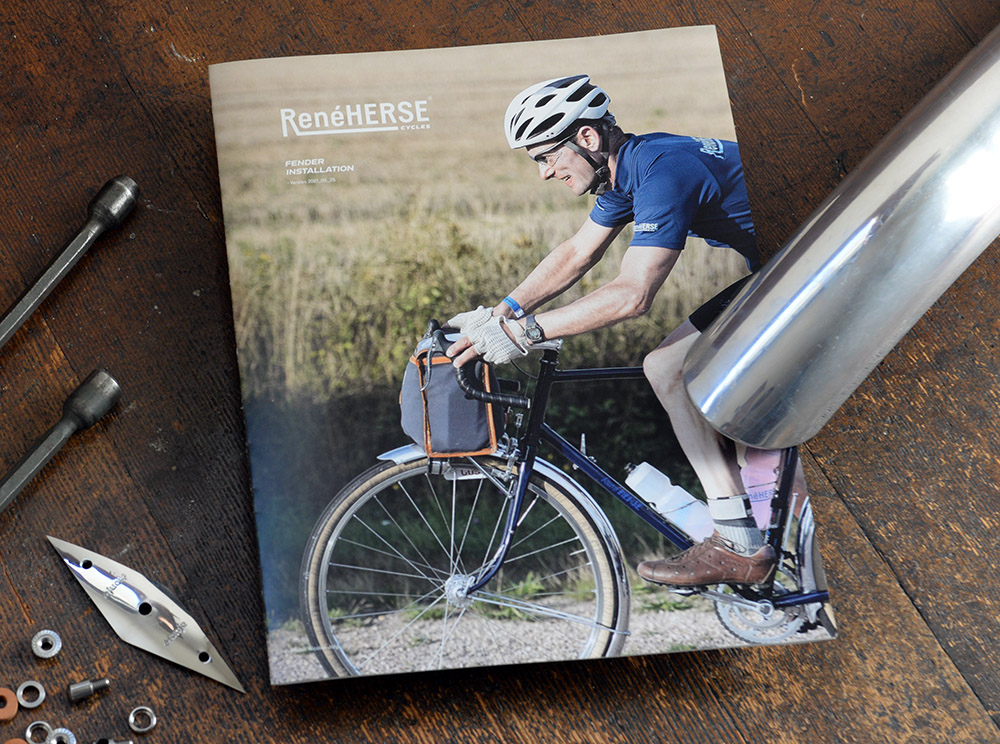
Installing aluminum fenders isn’t easy, but the rewards for the extra work make it worth while: It’s not just that Rene Herse fenders will keep you drier. They’re also quieter than plastic fenders. And, if installed correctly, they’ll last as long as your bike. To help with the installation, Rene Herse fenders come with illustrated step-by-step instructions that walk you through the process.
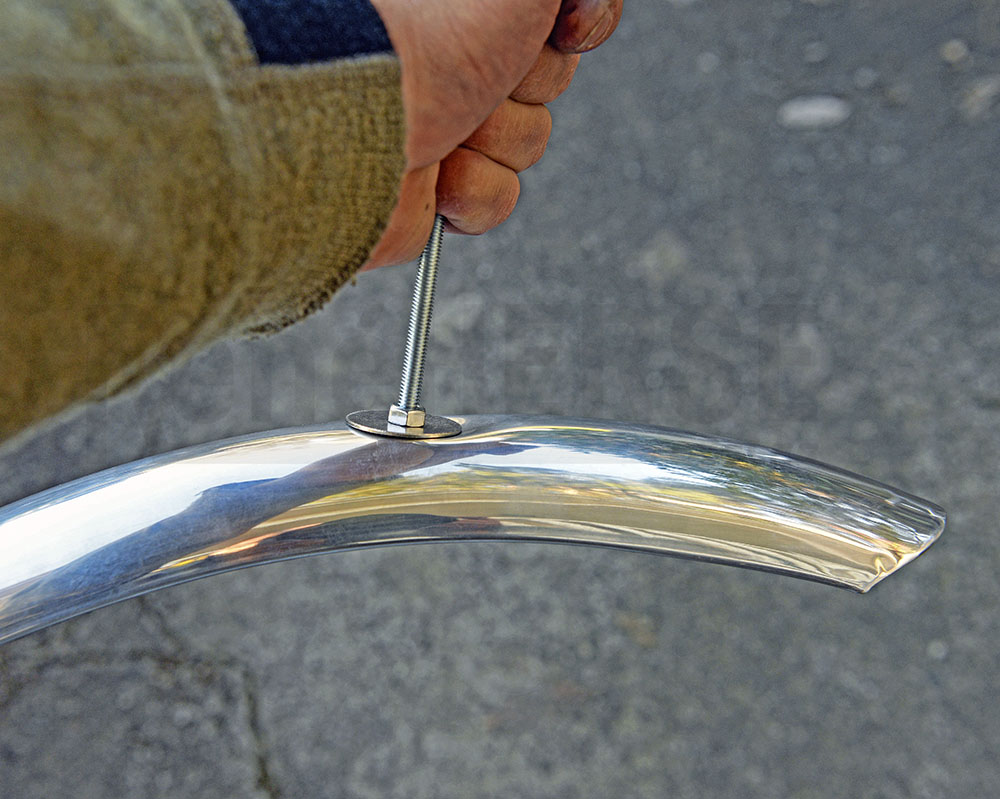
We don’t just sell you fenders, but also many useful parts. Above is the tool for indenting the fender for the fork crown. You can make your own from washers, nuts and a long bolt, or you can buy the parts in the correct sizes from us. (Either way is fine – it’s not like we are making money on these small parts.)
We offer the Fork Crown Eyebolts (Darumas) in three lengths. The longest one is useful if your fork has a unicrown, which puts the bolt hole too high for the standard Daruma to reach the fender. You could use an L-bracket to attach your fender to the fork crown, but that’s much less stable than pulling it against the bottom of the crown with a Daruma. So we specially made a 32 mm-long Daruma that you can cut to the length you need.
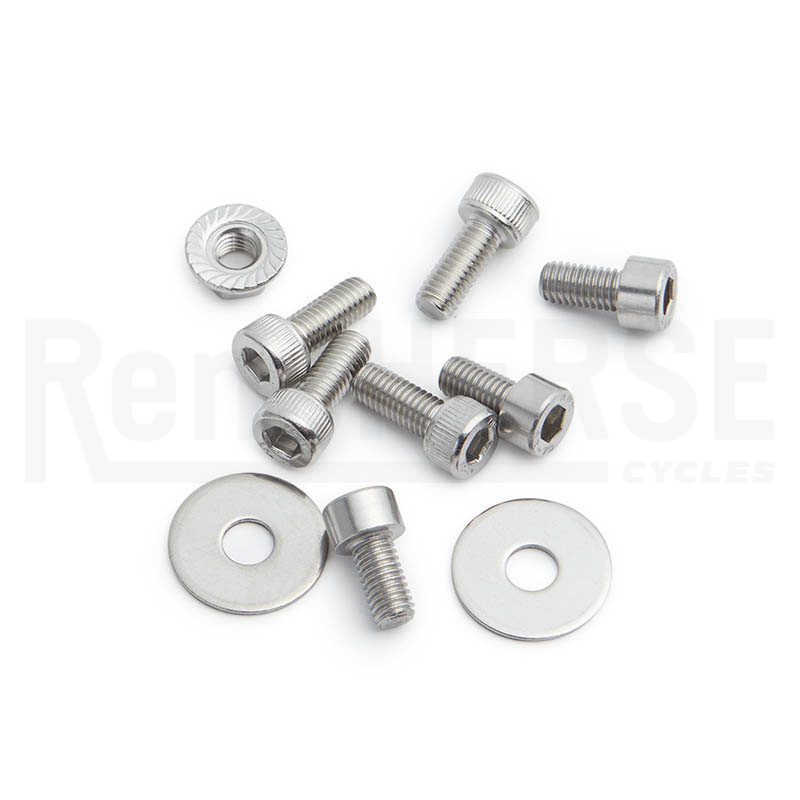
We offer kits with extra bolts and washers that include everything you need for most fender installations…
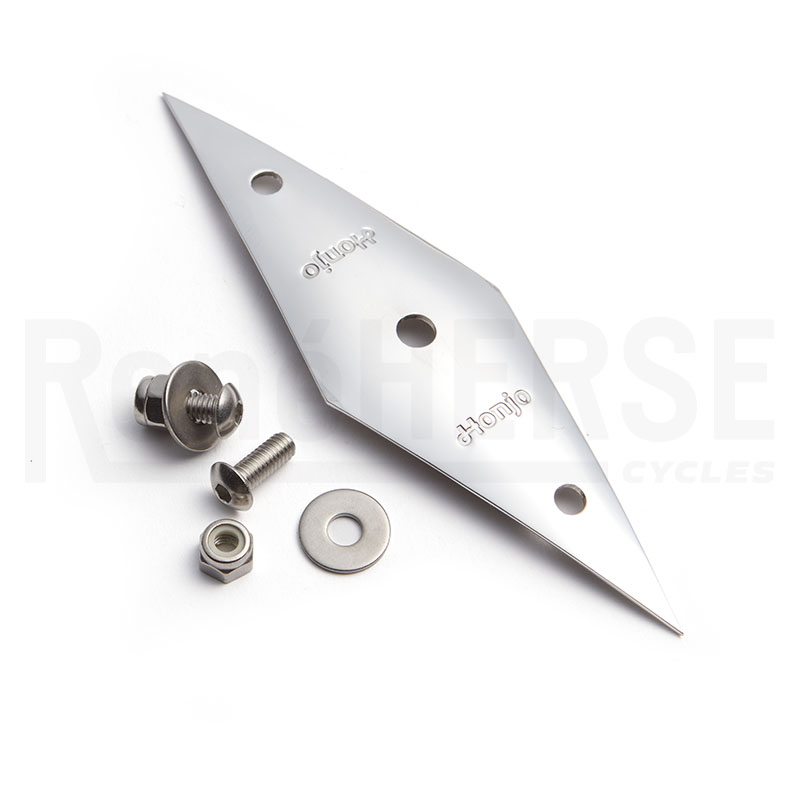
… and if you buy the Honjo reinforcement for the rear fender from us, we supply it with the correct bolts to install it. Small things, but they can take the frustration out of installing fenders (and save you multiple trips to the hardware store).
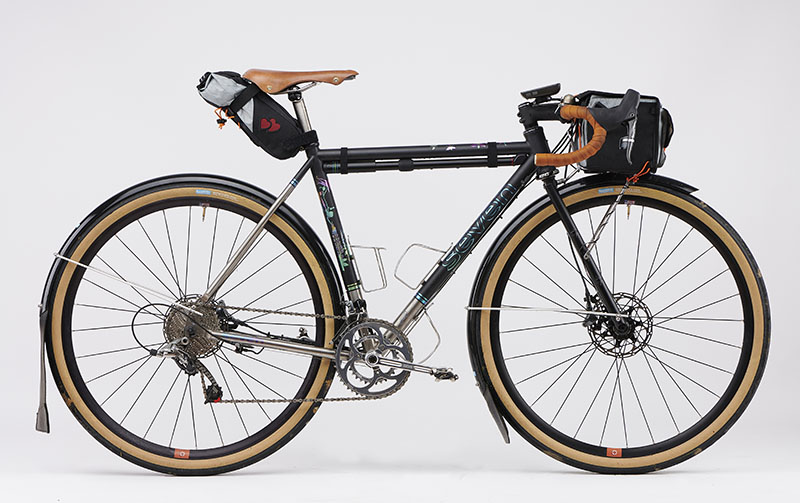
Rene Herse fenders are available in polished aluminum or in black, in many sizes, with smooth, fluted and hammered finish. Great fenders take the suffering out of riding in the rain. And even if you don’t plan to ride in the rain, knowing that a mountain thunderstorm won’t make you miserable allows you to head out on adventures that otherwise might be a bit daunting. You don’t need to be a ‘fender snob’ to equip your bike with the best fenders – it’s all about making your rides more enjoyable!
Further Reading:
• How to check whether your bike can fit fenders easily?
• Which fenders for which tire size?


